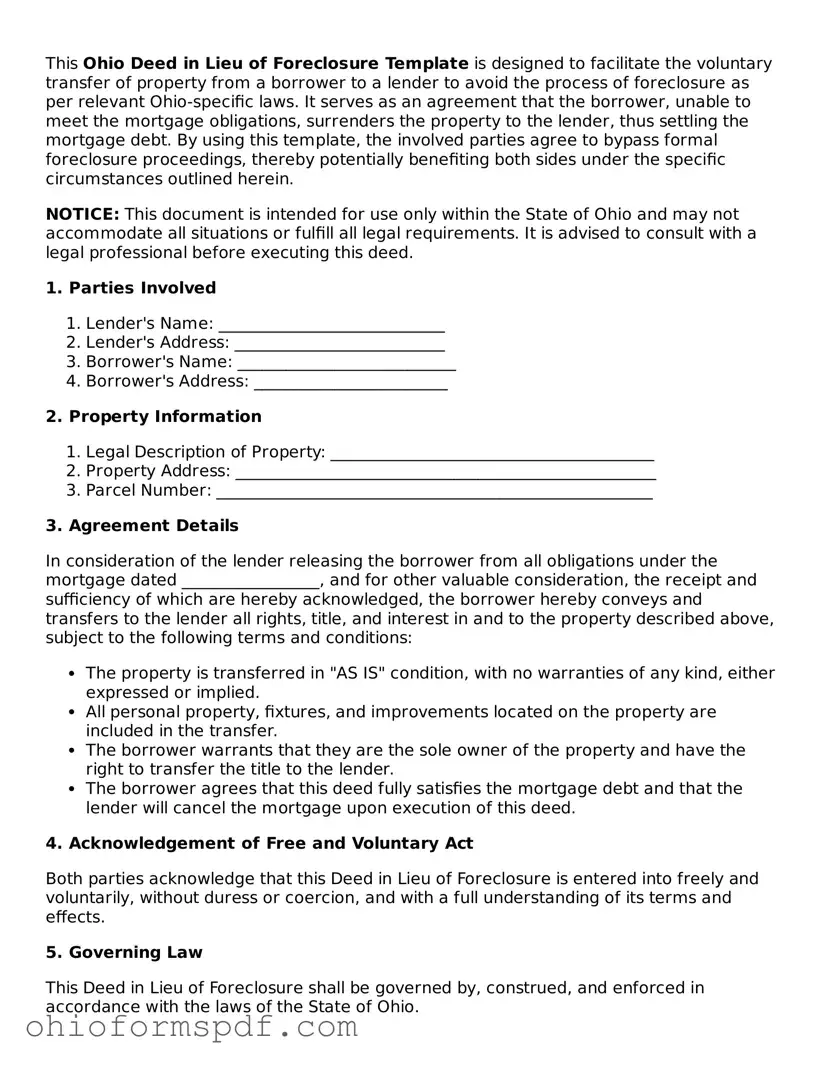What is an Ohio Deed form?
An Ohio Deed form is a legal document used to transfer ownership of real estate in the state of Ohio from one party (the grantor) to another (the grantee). It outlines the specific details of the property transaction, including the identities of the involved parties, the description of the property, and the conditions of the transfer. This document must be filed with the appropriate county recorder's office to be considered valid.
How are Ohio Deed forms typically classified?
Ohio Deed forms are classified into several types based on the warranties provided by the grantor. The main types include the General Warranty Deed, which offers the grantee the highest level of protection, affirming the grantor has full ownership of the property and the right to sell it; the Limited Warranty Deed, which protects against defects that occurred only while the grantor owned the property; and the Quitclaim Deed, which offers no warranties and transfers only the ownership that the grantor may have, without any guarantee of clear title.
What are the key elements included in an Ohio Deed form?
An Ohio Deed form typically includes the names and addresses of the grantor and grantee, a legal description of the property, signatures of the grantor(s), and often the grantee(s), acknowledgment by a notary public, and sometimes specific promises or warranties about the property. The form might also include the tax parcel identification number and details of any considerations exchanged for the transfer of the property.
Is a notary required for an Ohio Deed to be valid?
Yes, for an Ohio Deed to be legally valid, it must be notarized. This means that a notary public must witness the signing (or acknowledgment) of the document by the grantor. Notarization helps to ensure the legitimacy of the signatures and adds a layer of protection against potential fraud.
Where can one file an Ohio Deed form?
An Ohio Deed form must be filed with the County Recorder's Office in the county where the property is located. Filing the deed is a necessary step to make the transfer of ownership public record, which provides notice to third parties and helps in protecting the grantee's interests in the property.
Are there any specific requirements for the legal description of the property in an Ohio Deed form?
Yes, the legal description of the property in an Ohio Deed form must be accurate and complete. This description is crucial because it identifies the exact piece of land being transferred. It often includes lot numbers, boundary descriptions, and may reference plats or surveys. A vague or incorrect legal description can invalidate the deed or cause disputes in the future.
Can an Ohio Deed form be used to transfer property to a trust or an LLC?
Yes, an Ohio Deed form can be used to transfer property to a trust, an LLC (Limited Liability Company), or any other legal entity. When transferring to a trust, the trustee's name should be listed as the grantee, along with a reference to the trust. When transferring to an LLC, the legal name of the LLC must be correctly stated. The specifics might vary, so it’s recommended to consult with a professional.
What happens if an Ohio Deed form is filled out incorrectly?
If an Ohio Deed form is filled out incorrectly, it can lead to various problems, such as delays in the transfer process, disputes over property boundaries, or even the deed being declared invalid. To prevent such issues, ensure that all information is accurate and complete before filing. If mistakes are found after filing, a corrective deed may need to be prepared and filed.
Is it necessary to hire an attorney to prepare an Ohio Deed form?
While it is not legally required to hire an attorney to prepare an Ohio Deed form, it is highly recommended. Real estate transactions involve significant legal considerations, and the consequences of errors can be severe. An experienced attorney can provide guidance, ensure that the deed complies with all state laws, and help avoid issues that could arise from inaccuracies or omissions.
